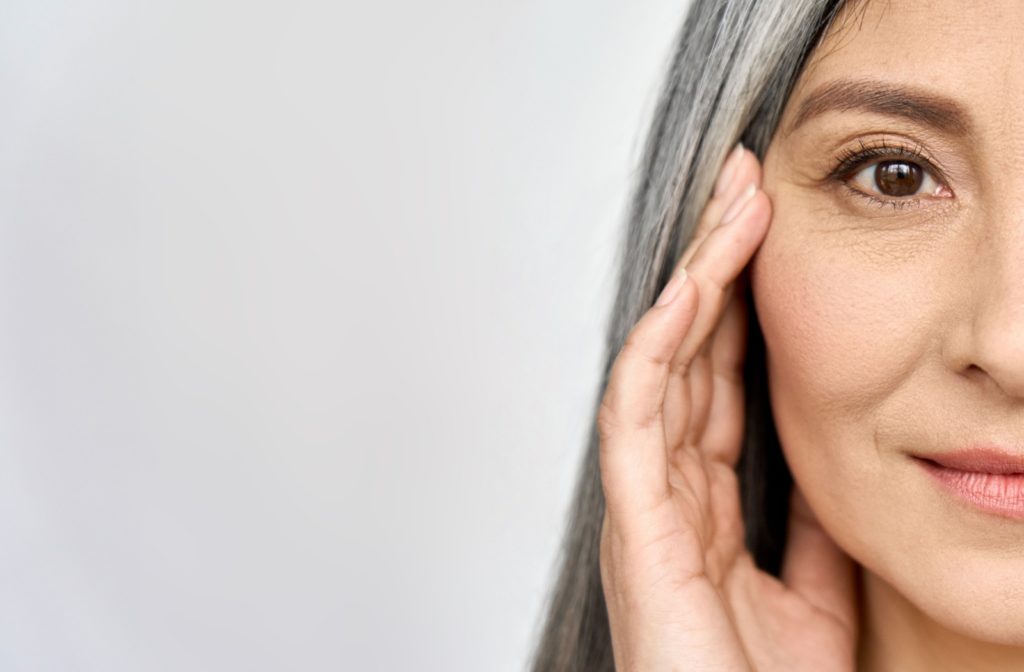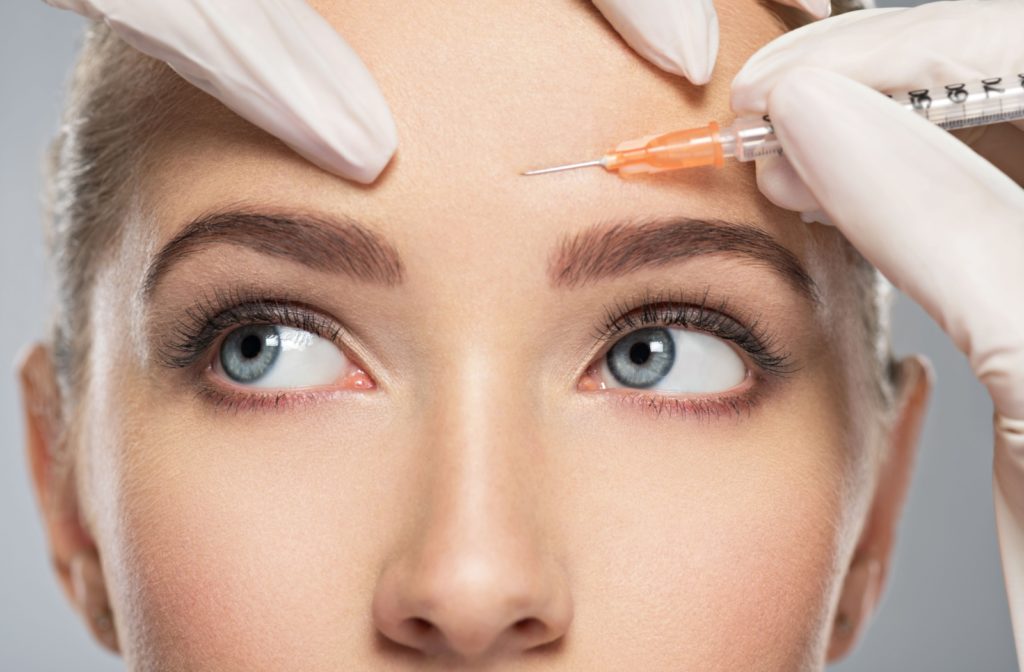Botox is a popular cosmetic treatment used to help reduce the appearance of wrinkles and fine lines on the face. It temporarily paralyzes muscles in the targeted area, resulting in smoother skin. However, some people may experience dry eyes after receiving Botox injections.
While it is an effective treatment for reducing wrinkles, the muscle paralysis it induces can sometimes affect the muscles responsible for tear production. This can lead to decreased moisture and lubrication on the eye’s surface, which can cause discomfort, irritation, and even blurry vision.
What Is Dry Eye?
Dry eye is a common condition that occurs when the eyes do not produce enough tears or when the tears evaporate too quickly. Tears are necessary for maintaining healthy eyes as they provide moisture and lubrication to prevent dryness and protect against infection. When tear production is disrupted or decreased, dry eye symptoms can arise.
Some common symptoms of dry eye include:
- Stinging or burning sensation in the eyes
- Sensitivity to light
- Redness in the eyes
- Blurry vision
- Eye fatigue or discomfort
How Does Botox Work?
Botox is made from a neurotoxin called botulinum toxin, which blocks the signals between nerves and muscles. When injected into specific facial muscles, Botox temporarily paralyzes them, resulting in smoother skin and reduced wrinkles. The full effects of Botox usually take a few days to be seen, and they typically last for 3 to 4 months.
How Botox Can Cause Dry Eyes
As mentioned earlier, Botox injections can affect the muscles around the eyes that are responsible for tear production. The paralysis caused by Botox can disrupt the normal functioning of these muscles, leading to decreased tear production and dry eye symptoms. Additionally, Botox can cause changes in facial expressions and muscle movements, which can affect how the eyelids close and spread tears across the surface of the eye.
Other factors that may increase the likelihood of developing dry eyes after Botox injections include:
- Previous history of dry eye
- Existing eye conditions, such as blepharitis or meibomian gland dysfunction
- Certain medications that decrease tear production
- Age (as tear production naturally decreases with age)
Managing Dry Eye Symptoms After Botox Injections
If you experience dry eyes after receiving Botox injections, there are a few things you can do to alleviate the symptoms:
- Use artificial tears: Over-the-counter artificial tears can help temporarily relieve dry eyes. These eye drops supplement the natural tear film and provide lubrication to the eyes.
- Apply warm compresses: If you have swelling or bruising around the eyes, applying a warm compress can help reduce inflammation and improve tear production.
- Avoid rubbing your eyes: Rubbing your eyes can further irritate dry eyes and potentially worsen swelling or bruising.
- Stay hydrated: Drinking plenty of water can help keep your body and eyes hydrated, which may improve tear production.
- Talk to your optometrist: If you are experiencing persistent or severe dry eye symptoms after Botox injections, it is important to consult with your optometrist. They may recommend additional treatments or adjustments to your Botox injections to help alleviate dry eye symptoms.

Tips for Avoiding Dry Eyes After Botox Injections
If you are considering getting Botox injections, there are a few things you can do to help prevent dry eyes from occurring:
- Before receiving Botox injections, inform your doctor of any history of dry eye or existing eye conditions. This can help your doctor determine the best course of action to avoid dry eye symptoms.
- Consider using preservative-free Botox injections. The preservatives in Botox may irritate the eyes and contribute to dry eye symptoms.
- Take breaks from screen time after receiving Botox injections. Staring at screens for extended periods can worsen dry eye symptoms. Taking breaks and blinking frequently can help prevent this.
- Use a humidifier in your home or workplace to help keep the air moist, which can help keep your eyes lubricated.
- Follow any post-injection instructions from your doctor, including avoiding certain activities like wearing makeup or participating in vigorous exercise after receiving Botox injections. These precautions can help minimize the risk of developing dry eye symptoms.
- If you experience dry eyes after Botox injections, follow the tips mentioned in the previous section to help alleviate symptoms. If your symptoms persist or worsen, be sure to consult with your doctor for further guidance.
Combating Dry Eyes With Dr. Bladh
While Botox injections offer many aesthetic and medical benefits, they can, in some cases, lead to dry eye symptoms. It is crucial to be informed about this potential side effect and take proactive steps to mitigate it.
Should dry eye symptoms arise, it’s important to address them promptly with appropriate remedies and consult an eye doctor for personalized advice.
Dr. Bladh, O.D. offers comprehensive eye care services, including dry eye treatment. Feel free to schedule an appointment with us if you have any concerns or questions. Don’t let dry eyes damper your Botox experience–stay informed and care for your eye health.



